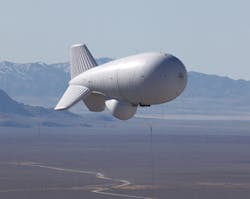Raytheon's Patriot and JLENS systems perform integration test
The JLENS surveillance system was evaluated on its ability to detect and track a long-range threat and then cue the fire control radar. In turn, the fire control system was evaluated on its ability to track and transmit target data to Patriot computers. All data from the exercise will be analyzed against test parameters.
JLENS is a long-endurance, over-the-horizon sensor system that is designed primarily to detect and track hostile cruise missiles; however, it is also capable of detecting and tracking low-flying aircraft and unmanned aerial systems. JLENS also incorporates the capability to detect and track ballistic missiles, large caliber rockets and surface targets on land and sea. A JLENS system, called an orbit, consists of two tethered 74-meter aerostats, one with a surveillance radar and with a fire control radar, connected to mobile mooring stations and communications and processing groups. The aerostats elevate the radar and communications systems to 10,000 feet. The surveillance radar provides 360-degree coverage and the fire control radar provides sectored precision tracking.
A JLENS orbit can remain operational in the air for 30 days at a time.
The Patriot Air and Missile Defense System, the other major player in the integrated fire control exercise, is a component in the air and missile defenses of 12 nations. Patriot is effective against a full range of threats, including enemy aircraft; tactical ballistic missiles; cruise missiles; and unmanned aerial systems (UAS).
Raytheon is the prime contractor for JLENS and domestic and international Patriot systems, as well as systems integrator for Patriot Advanced Capability-3 missiles.
